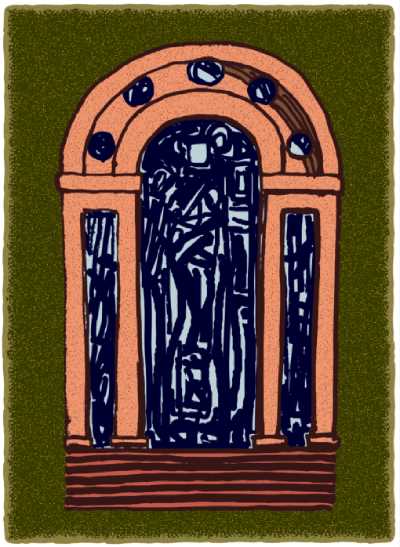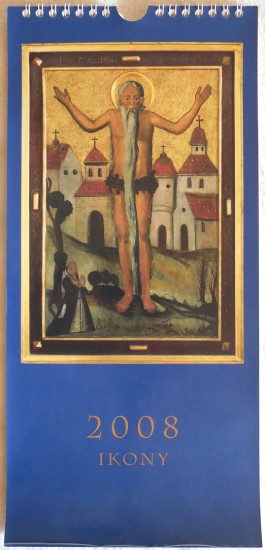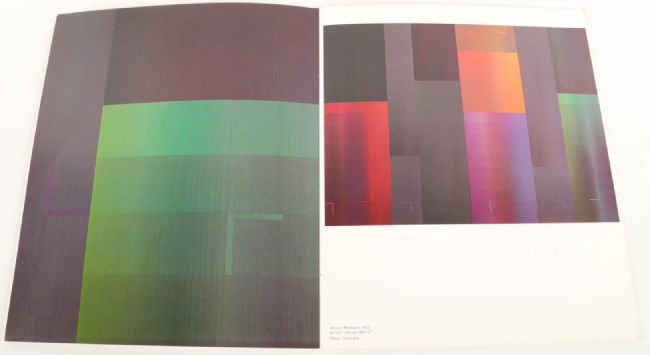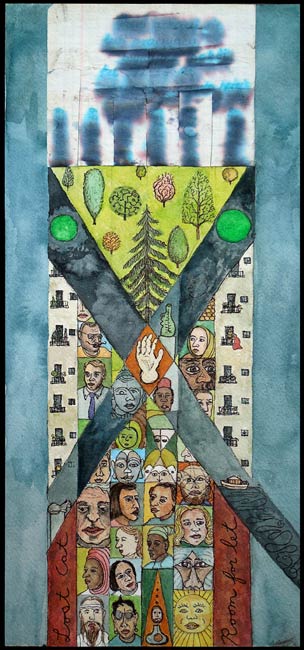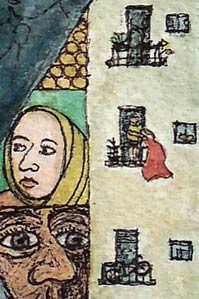When I was eleven years old, I thought I wanted to be an architect. I was attracted to building, materials, and the feeling of being in a place. However, I did not know what an architect did aside from make plans. Although, I lost the desire to be an architect, I still feel connected to the feeling that architecture evokes. I am aware how these shapes, ornament, and colors help form my perspective.
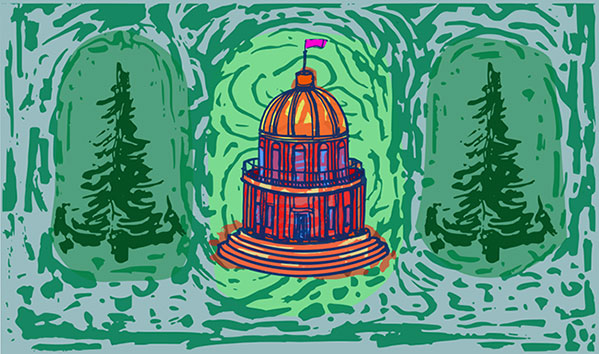
A building can hold and reveal stories and is a place to look out of and through. In the example above, I continue to examine Italian Rennaisance architecture. Here I fashioned a drawing after a domed building inspired by Andrea Palladion. While I am merely interpreting or making a derivative version of a building, I am also aware that art reveals more than one subject, and the inescapable subject is the medium itself. For example the act of painting always reveals the language and construction of painting. I realize now that I am also attracted to the structure and planning of architecture and perhaps this is what led me to study printmaking. Although different discipline, making prints required step by step planning and an exacting sensibility a kin to the architectural process.
While I have gained great pleasure from making prints and it has been an important component of my art, the means of its production has proven more and more ineffective when compared with digital rivals that tap into the same esthetic. Without a studio I can use vector graphics to prepare a range of marks equivalent to what I would have previously carved for a relief print. I can make blocks of color similar to the stencils made for screen printing. I can even use bitmap in photoshop to approximate touche washes used in lithography. Additionally, with a digital illustration, I have the freedom to test and make adjustments with less effort.
Because vector illustration can approximate printmaking, does this mean that myself or others should quit making prints? Probably not. However, it becomes increasingly apparent that one’s process may outlive its usefulness. This is worth investigating in much the same way we ought to consider the value of razing an old building to replace it with something new. Sometimes we have regrets and at other times the new results are an improvement.
